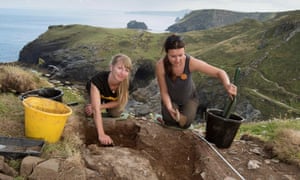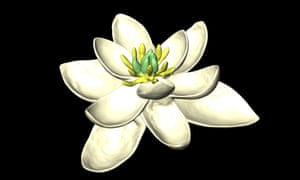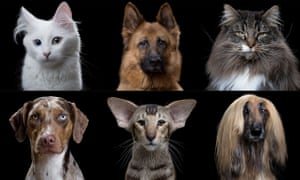via OUP Blog by Fransisco J. Ayala and Camilo J. Cela-Conde

Human skull photo by Sandro Katalina. CC0 Public Domain via Unsplash.
The discovery in Jebel Irhoud, Morocco of human fossils with modern facial features, similar to ours, has been a wonderful surprise, even outside the world of anthropology. The discoveries have been published in the journal Nature by Jean-Jacques Hublin and collaborators. The fossils are associated with tools from the Middle Stone Age, the technique immediately preceding the Upper Pleistocene. The surprise is due to the age of the tools and of the fossils, somewhat older than 300,000 years. The oldest Homo sapiens previously known, from Florisbad, South Africa, are more recent. The fossil tooth found in this deposit had been dated, using the electron spin resonance (ESR) technique, at 295,000 ± 35,000 years.
Continue reading
=============================
via Interesting Literature
The greatest food poems in English
Looking for a good poem to read before dinner? Poets have often sung the praises of their favourite fruits, or meals, or sweet and tasty treats. Below we’ve chosen ten of the very best poems about food, dinner, fruit, and other fine morsels.
Continue reading
I do not care about the first nine but if Michael Rosen’s “Chocolate Cake” had not been included I would have felt very let down.
=============================
via 3 Quarks Daily: John Williams in The New York Times
In the ever-raging battle between faith and science, the neurologist Jay Lombard is one of those rare emissaries who communicate in the language of both camps. In his new book, “The Mind of God,” he uses his experience studying the brain to ask some of the largest philosophical questions: Does God exist? Does life have meaning? Are we free? Lombard writes that he is interested in a “large faith,” rather than a specific religion – “a faith invigorated and enlightened by science rather than being at odds with it.” Below he discusses the debates over brain and mind, his editor’s unpromising reaction to an early manuscript, his appreciation for Jerry Garcia and more.
Continue reading
=============================
via the Guardian by Steven Morris
English Heritage says people who lived on site of Cornish castle 1,000 years ago dined on oysters and imported fine tableware

Archaeologists conducting the first research excavations at Tintagel in decades. Photograph: Emily Whitfield-Wicks/English He/PA
Early Cornish kings feasted on a diet of oysters, roast pork and fine wine, eating and drinking from bowls imported from Turkey and glass goblets from Spain, a new dig at Tintagel Castle has suggested.
Discoveries made by the Cornwall archaeological unit (CAU) support the view that Tintagel was a royal site during the 5th and 6th centuries, with trading links reaching as far as the eastern Mediterranean.
Perched on Cornwall’s rugged north coast, Tintagel has for centuries been associated with the legend of King Arthur. Over the past 18 months, its custodian, English Heritage, has been accused of putting too much emphasis on the stories of Arthur and Merlin, rather than focusing on the site’s true, ancient Cornish heritage. The excavations, the first at Tintagel for decades, may help redress the balance.
Continue reading
=============================
via Big Think by Frank Jacobs

Despite talk of American decline, the U.S. still is the world's only superpower – if by that you mean: the country with by far the biggest military footprint throughout the world.
These maps, produced at the end of last year by the Swiss Institute for Peace and Energy Research (SIPER), show the geographic distribution of foreign military bases for five countries with some of the largest defence budgets in the world.
Continue reading
=============================
via the Guardian by Nicola Davis

A model of the flower reconstructed by the new study, showing both female (carpels) and male (stamens) parts, and multiple whorls of petal-like organs, in sets of threes. Photograph: Hervé Sauquet & Jürg Schönenberger.
Delicate and upturned, with curving petals arranged in threes, it looks like the subject of a Monet painting. In fact, it is what scientists believe the bloom of the last common ancestor of all living flowers looked like.
Flowering plants – or angiosperms – are thought to make up about 90% of all living land plants. There are more than 300,000 different species on the planet, from tiny forget-me-nots to glorious magnolias.
But while flowering plants are thought to have emerged between 140m and 250m years ago, there are no fossil flowers more than 130m years old, making it challenging to work out what the first flowers might have looked like.
Continue reading
=============================
via 3 Quarks Daily by Yohan J. John
Scientists have long acknowledged the power of metaphor and analogy. Properly understood, analogical and metaphorical thinking are not merely ornamental aspects of language, but serve as a bridge from the known to the unknown. Perhaps the most important example of this process was the one that epitomizes the scientific revolution: Isaac Newton’s realization that both heavenly and terrestrial bodies were governed by the same physical laws. A precise mathematical analogy exists between the falling of an apple and the orbit of the moon around the earth. The moon can be thought of as a really big and far-away apple that’s “perpetually falling”. Newton’s analogy rests upon a broadening of the concept of free-fall – in other words, it involves a more abstract concept of motion. A couple of centuries later, James Clerk Maxwell recognized the process of generalization and abstraction as central to the scientific enterprise. The new sense of an idea, “though perfectly analogous to the elementary sense, is wider and more general. These generalized forms of elementary ideas may be called metaphorical terms in the sense in which every abstract term is metaphorical”. We might go so far as to call metaphor the alchemy of thought – the essence of creativity.
Continue reading
=============================
via Boing Boing by David Pescovitz
Watch Denise Wade of Bat Conservation and Rescue QLD in Queensland Australia feed a banana to a a rescued bat. The bat was hit by a car and the driver kindly covered the injured animal with a box until help arrived.
“On this occasion we have a happy outcome and with no broken bones and only a slight concussion, Miss Alisha (named for the car’s driver) will spend a short time in care before being released back to her colony,” writes Wade.
=============================
via Arts & Letters Daily: Michael Dirda in The Washington Post
One day, more years ago than I like to number, I rode my bicycle to the branch library located in the Plaza Shopping Center in Lorain, Ohio. There, from a bottom shelf, I plucked out a slender volume titled “A Shropshire Lad” by A.E. Housman. I carried it to a table and read for an hour, finally checking the book out for the usual two weeks. When it was due, I checked it out again.I remember this so well because I’d never before been interested in a single-author poetry collection. But earlier that summer – I must have been 14 – I’d bought a paperback called “Immortal Poems of the English Language ,” mainly because I had casually flipped it open and happened upon two of Housman’s most famous lyrics: “When I was one-and-twenty” and “With rue my heart is laden.”
Continue reading
=============================
New research reveals humans have identified as either cat or dog lovers since the stone age, but in fact, our pets are more closely related than you might think
via the Guardian by Elsa Panciroli

Domesticated dogs and cats Photograph: Robert Bahou/Rex Shutterstock
Are you a dog person, or a cat person? The question is often treated as dichotomous: if you appreciate the solidity of a steadfast pooch, you can’t also relish the coquettish companionship of a kitty. Recent studies suggest humankind could have been divided by their pet-preferences since the stone age. In evolutionary terms, however, the question is far from black and white. Cats and dogs belong together, related to one another by a common ancestor. They share this ancestry with a whole suite of other animals, large and small. One may as well ask: are you a badger person, or a hyena-person? Do you prefer meerkats, or weasels?
Continue reading
No comments:
Post a Comment